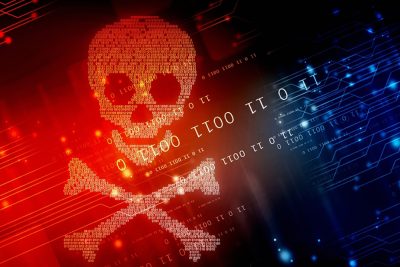In a world where technology reigns supreme, businesses are becoming increasingly reliant on digital solutions to drive efficiency, productivity, and profitability. But with great power comes great responsibility – and the responsibility of safeguarding your business from potential cyber threats is not to be taken lightly. In this regard, the importance of cyber security risk assessment and management cannot be overstated. It’s the linchpin in your business’s protective armor, helping you understand, manage, and mitigate the risks your organization faces in the digital landscape.
Cyber Security Risk Assessment and Management is a systematic approach to identifying, analyzing, and responding to the potential cyber threats that could impact your business operations. Without a comprehensive and robust risk assessment, your business could be left exposed to the myriad of cyber threats lurking in the online world. This can lead to wasted time, effort, and resources, and in worst-case scenarios, significant damage to your company’s reputation and bottom line.
On the flip side, a well-executed risk assessment can be a game-changer for your business. It provides valuable insights into the potential risks your organization faces, allowing you to implement appropriate security measures to protect your valuable assets. It’s about being proactive rather than reactive, allowing you to stay one step ahead of potential cyber threats.
In this article titled ‘The Art of Safeguarding: Unveiling the Secrets to Effective Cyber Security Risk Assessment and Management,’ we will delve deeper into the intricacies of risk assessment and management in cyber security. We’ll also introduce you to the personalized approach of Upper Echelon Technology Group LLC, a cybersecurity-focused managed services provider based in Wilmington, DE, that offers a tailored approach to IT Managed Services.
So, if you’re a business owner seeking to secure your digital landscape, optimizing your technology assets, and drive business growth, this article is a must-read. Stay tuned as we unravel the secrets to effective cybersecurity risk assessment and management.
Understanding Cyber Security Risk Assessment and Management
In the rapidly evolving digital landscape, understanding the concepts of Cyber Security Risk Assessment and Management is crucial for every business. These twin pillars form the bedrock of a robust cyber security strategy, and each plays a distinct yet interconnected role in safeguarding your organization’s digital assets.
What is Cyber Security Risk Assessment?
Cyber Security Risk Assessment is the first essential step in the journey of cyber risk management. It involves the systematic process of identifying, analyzing, and evaluating the potential cyber risks that could impact your organization. It’s about understanding what could go wrong, how likely it is to happen, and what the consequences would be.
From hardware and systems to customer data and intellectual property, a cyber security risk assessment focuses on all information assets that could be affected by a cyber attack. This process ensures that the cyber security controls you implement are appropriate to the risks your organization faces, preventing wasted time, effort, and resources on unnecessary measures while ensuring significant risks are not overlooked.
What is Cyber Security Risk Management?
Once risks have been identified and assessed, the next crucial step is Cyber Security Risk Management. This is a continuous process that involves identifying, analyzing, and responding to risk factors throughout the organization. Where risk assessment is about understanding the “what,” “how,” and “why” of potential risks, risk management is about determining the best course of action in response to those risks. This could involve accepting the risk, transferring it, mitigating it, or avoiding it altogether.
Risk management is about more than just reacting to identified risks, though. It’s about proactively building a resilient organization that can withstand and adapt to the ever-changing cyber threat landscape.
The Difference Between Risk Assessment and Risk Management in Cyber Security
While both risk assessment and risk management play essential roles in cyber security, they are distinct processes with different focuses. Risk assessment is about identifying and analyzing potential hazards and risks in the digital workspace. It’s a snapshot in time, providing a detailed picture of the potential threats and vulnerabilities your organization faces.
On the other hand, risk management is a broader and ongoing process. It’s about how you respond to the risks identified in the risk assessment, developing strategies to mitigate those risks, and implementing controls and measures to manage them effectively. It also involves regular monitoring and updating of the risk management plan to ensure it remains effective against new and emerging threats.
Together, risk assessment and risk management form a dynamic, cyclical process that helps organizations navigate the complex world of cyber security, ensuring they are prepared for, and resilient to, the ever-evolving cyber threats they face.
The Process of Cyber Security Risk Assessment
The first step in arming your business against cyber threats is understanding the process of cyber security risk assessment. This process is akin to a health check-up for your organization’s information security, identifying potential vulnerabilities and prescribing the necessary preventative measures.
Identifying Information Assets and Potential Risks
To start off, it’s crucial to determine the scope of your risk assessment. Similar to how a physician would need to know an individual’s medical history, understanding the scope allows you to focus your efforts on specific business units, locations, or aspects of the business such as payment processing or a web application.
Once the scope has been defined, the next task is to identify and create an inventory of all assets within the scope. This includes all physical and logical assets like hardware, systems, laptops, customer data, intellectual property, and more. The goal here is not to just identify your most critical assets, but also those that attackers might want to take control over to expand their attack.
Equipped with this information, you can then identify the various risks that could affect these assets. In this step, resources like the MITRE ATT&CK Knowledge Base and the Cyber Threat Alliance can be invaluable tools, providing high-quality, up-to-date cyber threat information.
Analyzing and Evaluating Risks
After identifying the assets and potential risks, the next step is risk estimation and evaluation. This involves analyzing and evaluating information security risks according to the criteria established earlier. It’s important to maintain a common understanding of terminology such as likelihood and impact to ensure a cohesive risk framework. Additionally, leveraging standards like ISO/IEC 27001 and frameworks such as NIST SP 800-37 can guide organizations on how to assess their information security risks in a structured manner.
The Role of ISO 27001 in Risk Assessment
ISO 27001 plays a significant role in the risk assessment process. This international standard provides specifications for a risk-based approach to information security management that addresses people, processes, and technology. Clause 6.1.2 of the Standard sets out the requirements of the information security risk assessment process, such as establishing specific information security risk criteria, identifying risks, and analyzing and evaluating information security risks.
Mastering the process of cyber security risk assessment is the first step towards strengthening your organization’s cyber defenses. Remember, the goal of a risk assessment is not just to fulfill compliance requirements, but to truly understand your organization’s cyber risk landscape and ensure your security measures are effective and appropriate.
The Four Steps of Risk Management in Cyber Security
Risk management is an ongoing commitment and plays a key role in maintaining a robust defense against cybersecurity threats. It’s not a one-time event but a continuous process that needs to be embedded in your organization’s culture. Let’s break down this process into four distinct steps.
Identifying Cybersecurity Risks
The first step towards effective risk management is to identify potential risks that could compromise your organization’s cybersecurity. This involves understanding your organization’s key business objectives and the IT assets that are crucial to achieving those objectives. Remember, you can’t protect what you don’t know. So, having a comprehensive understanding of your IT environment and potential vulnerabilities is the cornerstone of your risk management strategy.
Analyzing Cybersecurity Risks
After identifying potential risks, the next step is analyzing these risks. This involves assessing the likelihood of a cyber attack and its potential impact on your business. For instance, an attack on your customer data might have a higher impact than an attack on your internal communication system. This step provides a clear picture of your threat environment, allowing you to make informed decisions about which risks need immediate attention and which can be accepted or transferred.
Treating Cybersecurity Risks
Once the risks have been analyzed, the next step is to treat these risks. This involves implementing security measures to mitigate the identified risks. The treatment plan should outline the actions needed to bring the risk to an acceptable level, along with a timeline and commercial justification for the investment. Remember, the goal here is not to eliminate all risks–which is virtually impossible–but to manage them to a level within your organization’s risk tolerance.
Monitoring and Updating Your Risk Management Plan
The final step in the risk management process is to continuously monitor and update your risk management plan. Cyber threats are constantly evolving, and your risk management plan should reflect this dynamic nature. Regular reviews and updates to your risk register ensure that your organization stays one step ahead of potential threats. This includes tracking the implementation of your treatment plans and ensuring the residual risks remain within an acceptable tolerance level.
In conclusion, effective risk management in cybersecurity is a continuous, dynamic process that requires vigilance and adaptability. It’s not a set-it-and-forget-it solution, but an ongoing commitment to safeguard your organization’s valuable IT assets. This is where a cybersecurity-focused managed services provider like Upper Echelon Technology Group can provide invaluable expertise and support, ensuring that risk management remains a top priority in your organization.
The Role of Regular Cyber Security Risk Assessments
The ever-evolving landscape of cyber threats places a significant importance on the regularity of cyber security risk assessments. In the digital age, complacency can be costly. Just as a castle’s defenses must be regularly inspected and updated to meet new threats, so too must your cyber security defenses be continually evaluated and enhanced.
The Need for Continual Risk Assessment
Your organization’s IT infrastructure is not static. New software is implemented, hardware is upgraded, and processes are constantly evolving. As these changes occur, new vulnerabilities may be introduced, and the threat landscape can shift dramatically. This necessitates a continual approach to cyber security risk assessment. By regularly assessing your cyber security risks, you can ensure that your defenses keep pace with the evolving nature of cyber threats.
The Impact of Business, IT, and Legal Changes on Risk Assessment
Changes in your business environment, IT infrastructure, or legal framework also have a profound influence on your cyber risk profile. For instance, the launch of a new product, the adoption of a new technology, or the introduction of new laws such as the GDPR (General Data Protection Regulation), can all introduce new risks or alter existing ones. In this context, broad changes require a reassessment of your cyber security risk management strategy.
The Use of Risk Assessment Software Tools
Fortunately, the complexity of managing an ever-changing risk environment can be significantly reduced with the use of risk assessment software tools. Software like vsRisk, which is fully compliant with the ISO 27001 standard, can streamline the risk assessment process, delivering consistent and repeatable cyber security risk assessments each time. These tools can save you considerable time, effort, and expense, and provide a comprehensive snapshot of the risks your information systems face at any given point in time.
In summary, regular cyber security risk assessments are not a luxury, but a necessity in today’s digital landscape. They enable your organization to stay ahead of evolving threats, adapt to changes in your business, IT, and legal environments, and leverage technology to manage risks effectively. With a personalized approach to IT Managed Services, Upper Echelon Technology Group LLC can help you incorporate these practices into your overall cyber security strategy, ensuring that your organization remains secure, efficient, and profitable.
Upper Echelon Technology Group LLC: Personalized Approach to Cyber Security Risk Assessment and Management
The Unique Selling Proposition of Upper Echelon Technology Group LLC
In the complex world of cyber security, it’s not enough to simply react to threats as they occur. This is where Upper Echelon Technology Group LLC distinguishes itself from other players in the IT sector. The company takes a proactive, personalized approach to IT Managed Services, prioritizing the unique needs of each client.
Their unique selling proposition lies in their ability to resolve technology issues swiftly, leverage technology to enhance team efficiency, and identify areas where technology can boost profitability. This comprehensive approach extends beyond simply “fixing tech issues”; it’s about integrating technology into the very fabric of your business to drive growth, efficiency, and profitability.
How Upper Echelon Technology Group LLC Conducts Cyber Security Risk Assessment and Management
Upper Echelon Technology Group LLC excels at conducting cyber security risk assessment and management. Their comprehensive process begins with identifying the value of your information assets and potential risks. This step is crucial in understanding what’s at stake and where vulnerabilities might exist.
The next stage involves analyzing and evaluating these risks. Unlike some companies that might focus on historical occurrences to determine risk likelihood, Upper Echelon Technology Group LLC concentrates on the discoverability, exploitability, and reproducibility of threats and vulnerabilities. This dynamic approach reflects the ever-evolving nature of cyber threats.
Once risks are analyzed, the team then moves to treat these risks with an array of controls, which could include technological solutions like encryption, intrusion detection, and automatic updates, or nontechnical measures such as security policies and physical mechanisms.
But the process doesn’t end there. The company also takes into account the likelihood and impact of various scenarios on a yearly basis. This step helps determine how much to invest in mitigating each identified cyber risk. Risks are then prioritized based on the cost of prevention versus the value of the information.
Finally, all results are meticulously documented in risk assessment reports. This ensures that management is always aware of its cybersecurity risks and can take proactive steps to mitigate them.
In conclusion, Upper Echelon Technology Group LLC offers a personalized and comprehensive approach to cyber security risk assessment and management, enabling businesses to stay secure, efficient, and profitable in today’s digital landscape.
Conclusion: The Art of Safeguarding Through Effective Risk Assessment and Management
In the era of ramped-up digital threats and escalating cybercrime, the need for robust cyber security risk assessment and management cannot be overstated. It is an integral part of a holistic cybersecurity strategy. Whether it’s identifying potential risks, analyzing their impact, implementing appropriate safeguards, or continuously monitoring and updating your risk management plan, each step plays a pivotal role in fortifying your organization’s cybersecurity posture.
Upper Echelon Technology Group LLC excels in providing a personalized and comprehensive approach to cybersecurity risk management. By focusing on your unique business needs, they go beyond mere tech solutions to help you leverage your technology assets in the most effective and secure way. Their dedicated cybersecurity team is always ready to tackle your technology issues, enhance your team’s efficiency, and identify areas where technology can boost your bottom line.
Risk assessment and management is not a one-time event. It’s a continuous process that evolves with the changing threat landscape and your business’s growth. Upper Echelon Technology Group LLC understands this and conducts regular risk assessments to stay ahead of potential threats and vulnerabilities. They help ensure that your organization’s security measures are always up-to-date and capable of fending off the latest cyber threats.
In a nutshell, the art of safeguarding your business through effective cyber security risk assessment and management is a journey, not a destination. It’s about adopting a proactive approach, staying vigilant, and continuously improving your security measures to stay a step ahead of cybercriminals. And with a trusted partner like Upper Echelon Technology Group LLC by your side, you can confidently navigate through this journey, knowing that your business’s cyber safety is in good hands.
Remember, in the digital world, it’s not just about surviving, but thriving. And effective cyber security risk assessment and management is the key to unlocking this potential. Manage your risks, secure your assets, and let your business soar to new heights with Upper Echelon Technology Group LLC.





